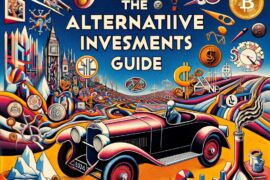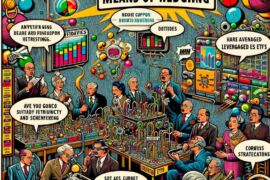Known as the “Oracle of Omaha,” Warren Buffett, the Chairman and CEO of Berkshire Hathaway, stands as an investment titan in the global financial arena. His unique value-oriented investment strategies, which prioritize buying undervalued stocks or businesses based on intrinsic value and a long-term perspective, have resulted in a track record of success that has garnered him worldwide recognition and admiration.
One of the most significant investments that epitomizes Buffett’s approach is Berkshire Hathaway’s acquisition of the Burlington Northern Santa Fe (BNSF) Railway. As one of the largest freight railroad networks in North America, BNSF provides a vital infrastructure for transport and commerce, making it a key player in the American economy.
In 2009, amid the financial turbulence created by the global economic crisis, Buffett took a bold and decisive step. He announced that Berkshire Hathaway would acquire BNSF Railway in what was the largest deal in Berkshire’s history. This audacious investment was driven by Buffett’s steadfast belief in the enduring importance of the railroad industry and the robust prospects of BNSF.

This article will delve into the fascinating saga of Buffett’s bet on railroads, providing a deep exploration of the factors that led to the decision to invest in BNSF Railway specifically. We will chart the course of this investment since its inception, examining the trials, triumphs, and financial performance along the way. Moreover, we will assess the present state and future potential of the railroad industry and evaluate BNSF’s position within that landscape.
In our journey through this investment case study, we will distill the key lessons that can be learned about Buffett’s distinctive long-term, value-driven investing philosophy. Through the lens of the BNSF Railway investment, we will gain insights into the principles that guide Buffett’s decisions and have defined his extraordinary investing career. This exploration offers a rich understanding of the art of long-term value investing, painted on the canvas of America’s vast railroad network.
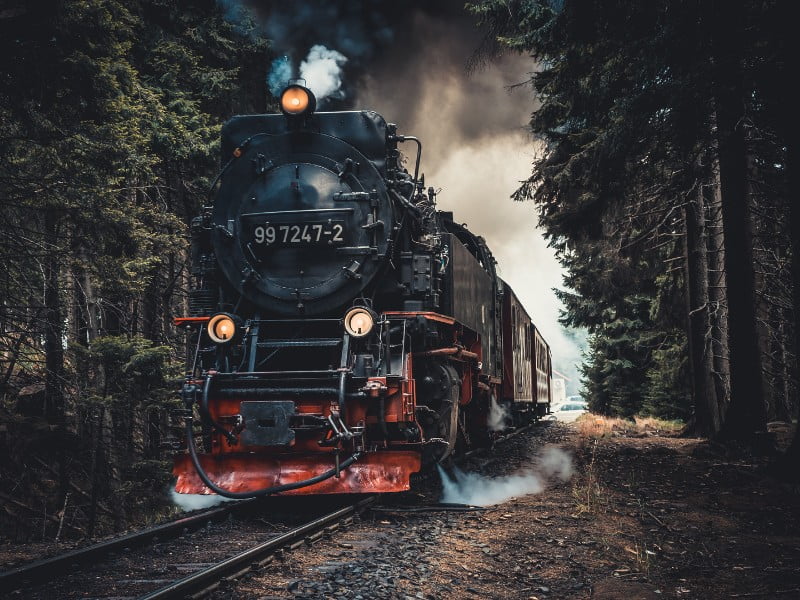
History of Railroads and Their Role in the Economy
The history of railroads in the United States is intricately tied to the growth and development of the nation itself. Beginning in the early 19th century, railroads rapidly became the backbone of the American economy, driving the expansion of industries and cities, and shaping the country’s geography. The advent of railroads marked a transformation in transportation, significantly reducing the time and cost of shipping goods and people across long distances. The railroad industry thus played a pivotal role in the economic development of the U.S., fueling industrialization, enabling westward expansion, and fostering trade and connectivity.
Fast-forward to the present day, and railroads continue to be an essential part of the national and global economy. Despite the rise of numerous other modes of transportation, railroads, particularly freight railroads like BNSF Railway, still account for a significant portion of long-distance freight transportation. They serve as the arteries of the American economy, transporting goods ranging from agricultural and consumer products to cars and coal across the country.
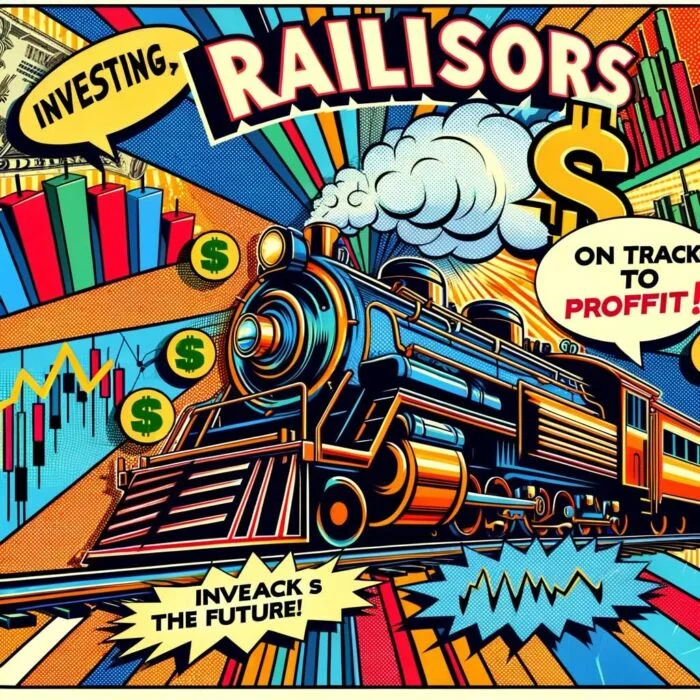
Moreover, railroads play a vital role in international trade. By linking seaports, airports, and border crossings, they facilitate the flow of goods between the U.S. and other countries. Additionally, the rail industry is a major employer and a significant contributor to the U.S. GDP.
The importance of railroads extends beyond the economic realm. They are also viewed as a more environmentally friendly mode of freight transportation, given their fuel efficiency and lower carbon emissions per ton-mile compared to trucks. As concerns about climate change grow, the role of railroads in sustainable transportation is likely to become increasingly important.
In summary, the history of railroads is a testament to their enduring importance in the U.S. economy and beyond. Their pivotal role in the past, present, and potentially future economic scenarios set the stage for understanding Warren Buffett’s interest in the railroad industry and, more specifically, his investment in BNSF Railway.
source: The Why Minutes With Nick Fretias on YouTube

Warren Buffett’s Decision to Invest in BNSF Railway
When Warren Buffett announced Berkshire Hathaway’s acquisition of BNSF Railway in 2009, it marked a pivotal moment in the history of both entities. To understand Buffett’s decision, it’s crucial to take a snapshot of the railway industry at the time.
In the wake of the 2008 global financial crisis, many industries, including railroads, were grappling with economic uncertainty. Yet, Buffett, with his remarkable foresight and faith in the U.S. economy, saw an opportunity where others saw crisis. While the railroad industry was experiencing a temporary dip, he recognized the enduring role of railroads in the country’s economic machinery.
BNSF Railway, in particular, represented a strong bet. It was one of the leading freight railroad networks in North America, with a vast expanse covering 32,500 miles across 28 states and three Canadian provinces. Its diverse freight base, which included coal, intermodal, and industrial products, gave it a competitive edge.

There were several key reasons why Buffett chose BNSF over other railroads. First, BNSF’s significant investments in infrastructure and equipment reflected a forward-looking approach aligned with Buffett’s long-term vision. Second, the company’s strong management team, led by CEO Matthew Rose, had a proven track record of delivering solid operational performance. Finally, its substantial rights of way and land grants presented potential opportunities for future growth.
Buffett’s long-term vision for the investment was grounded in his belief in the vital role of railroads in the U.S. economy. He saw BNSF as a bet on the future of the country, saying, “Our country’s future prosperity depends on its having an efficient and well-maintained rail system.” He expected that as the U.S. economy grew, so would earnings from hauling freight. Furthermore, as society grew more concerned about environmental issues, he anticipated a greater shift from road to rail, given rail’s superior fuel efficiency.
in sum, Buffett’s decision to invest in BNSF Railway was a classic display of his investing principles – spotting enduring value in a troubled market, backing strong management teams, and taking a long-term view on investments.
source: Yahoo Finance on YouTube

Performance of the Investment Over Time
In the years following Berkshire Hathaway’s acquisition of BNSF Railway, the investment has seen a mix of trials, triumphs, and notable growth. A deep dive into BNSF’s financial performance and key developments can illuminate the trajectory of this ambitious investment.
BNSF Railway’s financial performance since the acquisition has largely vindicated Buffett’s decision. It has consistently contributed a significant portion of Berkshire Hathaway’s annual revenue and net earnings. For instance, in its 2020 Annual Report, Berkshire Hathaway reported that BNSF contributed $20.8 billion to its total revenue of $245.5 billion, reinforcing its role as a significant contributor to Berkshire’s profitability.
Despite the impressive financial performance, the journey hasn’t been without challenges. For instance, BNSF, like many railroads, had to navigate a shifting energy landscape as the use of coal – a significant source of freight for railroads – declined due to environmental concerns. Yet, BNSF managed to weather this challenge by diversifying its freight mix and increasing its focus on intermodal freight.

The success story of BNSF under Berkshire’s ownership also includes notable investments in infrastructure, technology, and sustainability initiatives. The company has invested billions of dollars in maintaining and expanding its network, enhancing safety, improving operational efficiency, and reducing its environmental footprint. These investments underscore BNSF’s commitment to maintaining its competitive edge in the railroad industry while aligning itself with broader societal and environmental goals.
All in all, the performance of Berkshire’s investment in BNSF Railway underscores the wisdom of Buffett’s bet on the railroad industry. Despite facing numerous challenges, the company has been a robust and resilient performer in Berkshire Hathaway’s portfolio, reflecting the merits of Buffett’s long-term, value-oriented investment philosophy.
source: Buffett Online on YouTube

Future Prospects for the Railroad Industry and BNSF Railway
As we look towards the future, the railroad industry is expected to navigate a dynamic landscape marked by both challenges and opportunities. One of the key trends shaping the industry’s future is the transition towards a greener economy. As concerns about climate change intensify, railroads, which are already a relatively environmentally friendly mode of transportation, could gain an edge over more polluting modes such as trucks. In addition, innovations such as autonomous train operations and digitization are set to redefine the industry’s operational dynamics.
However, the industry also faces significant challenges. The decline in coal usage is expected to continue, which will impact a traditionally important source of freight for railroads. Similarly, economic uncertainties, infrastructure aging, and regulatory changes could pose hurdles to the industry’s growth.
For BNSF Railway, these trends and challenges paint a complex picture. On the one hand, BNSF is well-positioned to capitalize on the green transition. Its ongoing efforts to improve fuel efficiency and reduce emissions, coupled with its role in transporting goods necessary for renewable energy (like wind turbine components), align well with the shift towards a sustainable economy.
On the other hand, BNSF will need to navigate the decline in coal and other industry challenges effectively. Here, BNSF’s diversified freight portfolio and its commitment to investing in its network and technologies could prove to be its strengths. The company’s robust financial position and strong management team further bolster its ability to adapt to future industry trends.
While the future of the railroad industry and BNSF Railway is not without uncertainties, both are poised to continue playing a vital role in the U.S. and global economy. And Warren Buffett’s bet on railroads, particularly on BNSF Railway, seems likely to remain a crucial part of Berkshire Hathaway’s investment story.
source: CNBC on YouTube

Lessons from Warren Buffett’s Bet on Railroads
Reflecting on Warren Buffett’s audacious bet on BNSF Railway offers several valuable insights into his investment principles and long-term value investing strategy. These lessons go beyond the specifics of the railroad industry, serving as guideposts for investors across different contexts.

- Value Investing: The BNSF acquisition exemplifies Buffett’s classic value investing approach. He identified an industry and a company that were undervalued at the time but possessed enduring value. This underlines the essence of value investing – buying stocks for less than their intrinsic value and patiently waiting for the market to recognize their true worth.
- Long-term Orientation: Buffett’s decision to buy BNSF wasn’t influenced by short-term trends or fleeting market sentiments. Instead, he saw the lasting importance of railroads to the American economy. This long-term view is a cornerstone of Buffett’s investing strategy, emphasizing the importance of patience and resisting the impulse to follow market fads.
- Understanding the Business: Buffett’s bet on BNSF also demonstrates his emphasis on understanding the business before investing. He understood the historical significance of railroads, their role in the economy, and the potential impact of trends such as declining coal usage and increasing environmental consciousness.
- Strong Management: The acquisition underscores Buffett’s preference for companies with strong management teams. He recognized the competence of BNSF’s leadership, a factor that has undoubtedly contributed to its resilience and success over the years.
- Confidence in U.S. Economy: Lastly, the BNSF investment affirms Buffett’s unwavering faith in the U.S. economy. Despite the grim economic outlook at the time of the acquisition, he remained confident in America’s economic future, reinforcing his oft-quoted belief, “Never bet against America.
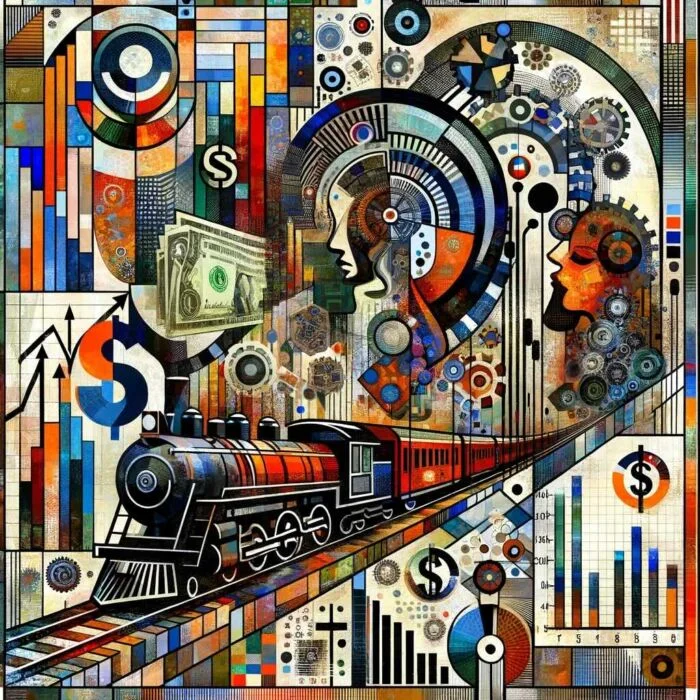
In sum, Buffett’s bet on BNSF Railway serves as a real-world case study in long-term value investing. It encapsulates his investment philosophy and offers important lessons for investors – on the importance of understanding the business, having a long-term view, and staying patient despite market volatility.
source: CNBC Television on YouTube

Conclusion: Railroads & Warren Buffett
As we draw our discussion to a close, it’s clear that Warren Buffett’s bet on BNSF Railway serves as a powerful illustration of his investment philosophy in action. From recognizing the enduring value of the railroad industry amidst economic uncertainty to displaying an unshakeable confidence in the long-term growth of the American economy, Buffett’s decision to acquire BNSF Railway underlines his deep-rooted commitment to value investing and long-term thinking.
This case study took us on a journey through the past, present, and potential future of the railroad industry, highlighting its economic significance and the challenges and opportunities it faces. Throughout this exploration, the strategic rationale behind Berkshire Hathaway’s investment in BNSF remained in focus, offering a tangible demonstration of how Buffett’s investment principles can be applied.
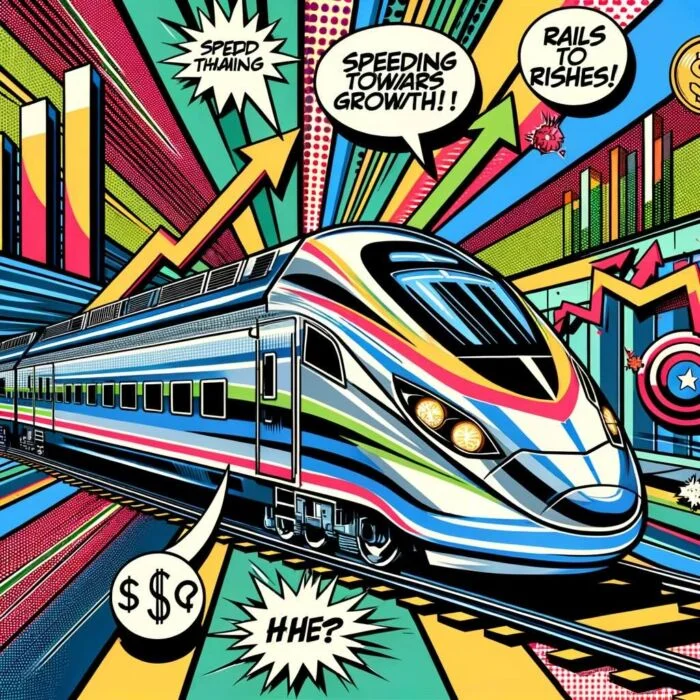
But perhaps most importantly, this examination of Buffett’s bet on railroads serves as a reminder of the power of patience, resilience, and a deep understanding of the business in investment decision-making. As markets ebb and flow, Buffett’s steadfast approach to investing stands as a testament to the value of taking a long-term view, reinforcing the notion that the most fruitful investments often come to those who wait.
So, as we reflect on the story of BNSF and its place within Berkshire Hathaway’s portfolio, we are reminded not just of the intricacies of railroad economics or the specifics of this particular investment, but of the broader investing lessons that Warren Buffett has championed throughout his career. These lessons, encapsulated in his bet on railroads, continue to resonate, offering guidance for investors navigating the complexities of today’s investment landscape.
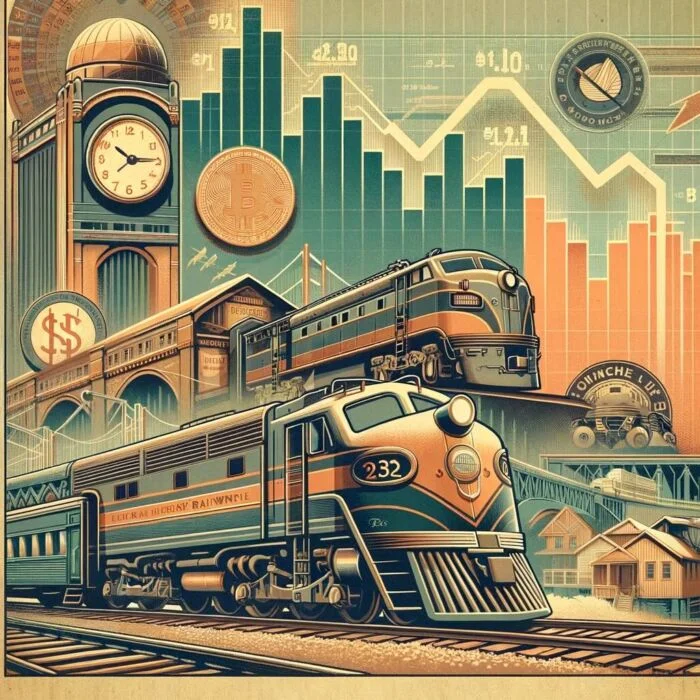
Important Information
Investment Disclaimer: The content provided here is for informational purposes only and does not constitute financial, investment, tax or professional advice. Investments carry risks and are not guaranteed; errors in data may occur. Past performance, including backtest results, does not guarantee future outcomes. Please note that indexes are benchmarks and not directly investable. All examples are purely hypothetical. Do your own due diligence. You should conduct your own research and consult a professional advisor before making investment decisions.
“Picture Perfect Portfolios” does not endorse or guarantee the accuracy of the information in this post and is not responsible for any financial losses or damages incurred from relying on this information. Investing involves the risk of loss and is not suitable for all investors. When it comes to capital efficiency, using leverage (or leveraged products) in investing amplifies both potential gains and losses, making it possible to lose more than your initial investment. It involves higher risk and costs, including possible margin calls and interest expenses, which can adversely affect your financial condition. The views and opinions expressed in this post are solely those of the author and do not necessarily reflect the official policy or position of anyone else. You can read my complete disclaimer here.


